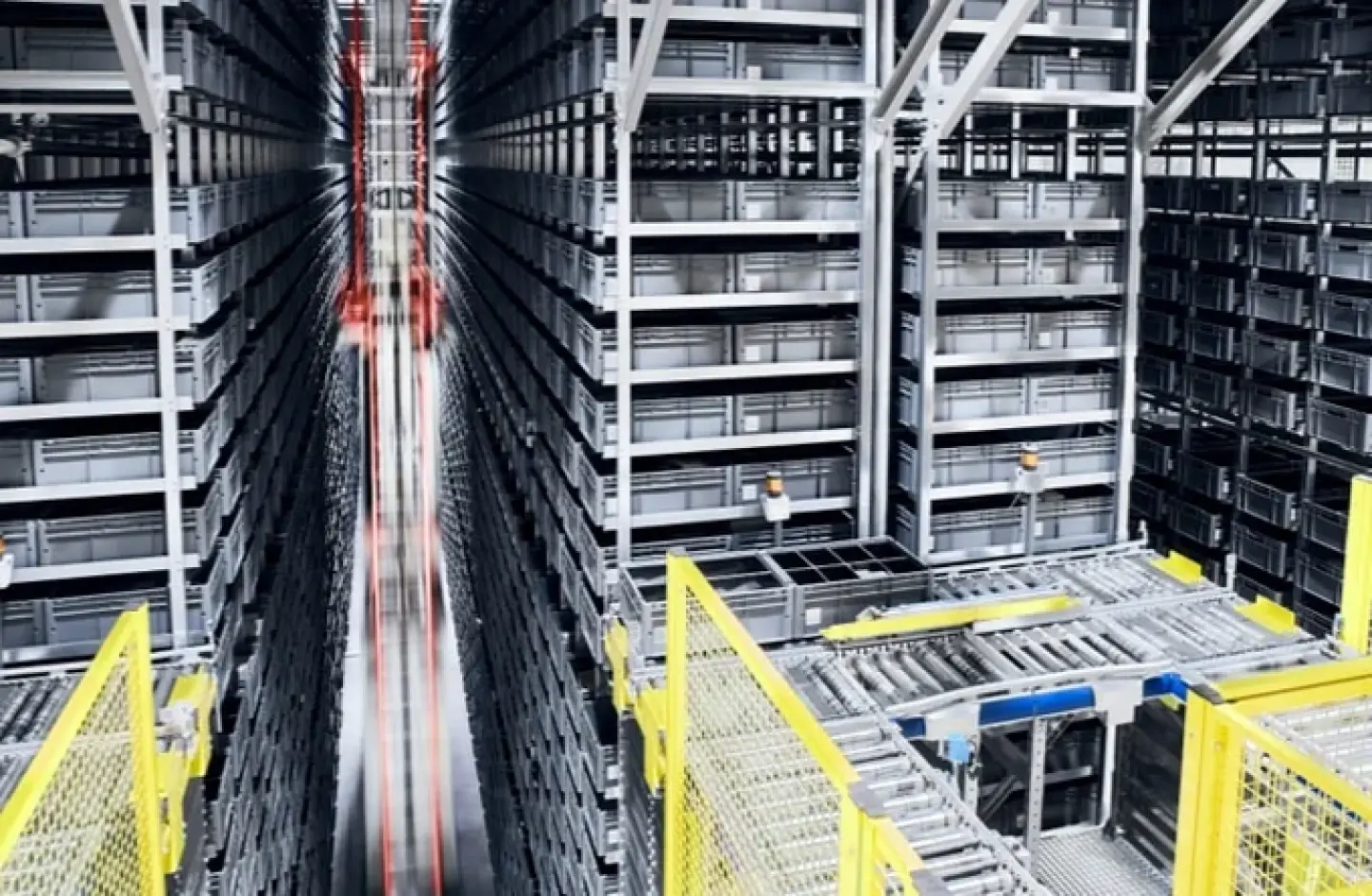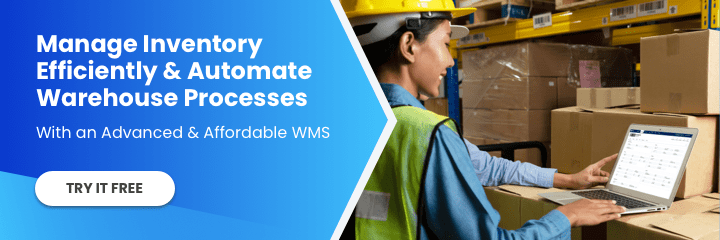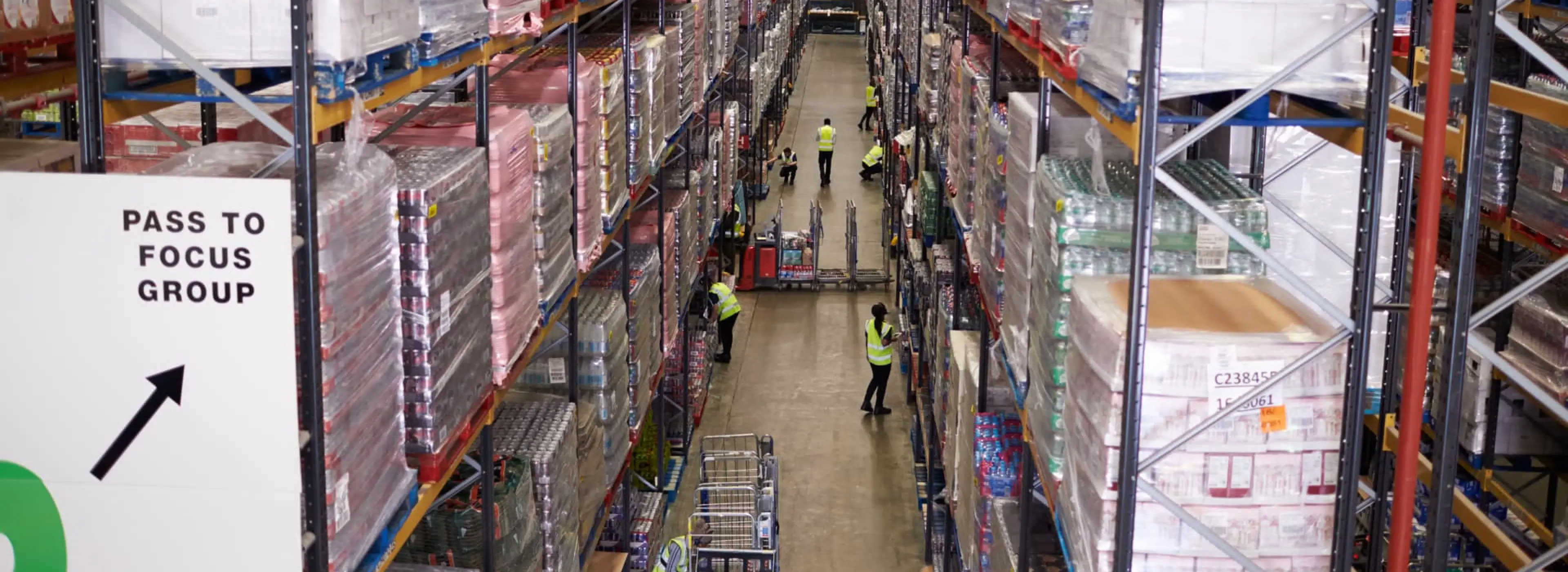For more information about warehouse management systems or the latest technology trends, you can follow us on LinkedIn, YouTube, X, or Facebook. If you have other inquiries or suggestions, don’t hesitate to contact us here. We’ll be happy to hear from you.
Choosing the best warehouse management system (WMS) is crucial to achieving maximum efficiency and productivity. With the right WMS, you can streamline your warehouse operations by automating tasks, optimizing inventory management, and improving overall efficiency.
But with so many options available in the market, how do you choose the right WMS for your business? In this article, we will guide you through the process of unlocking maximum efficiency by selecting the best warehouse management system. We will delve into the key factors to consider, such as scalability, integration capabilities, ease of use, and reporting functionalities. By understanding these essential criteria, you will be empowered to make an informed decision that aligns with your business objectives.
Click Here: Boost Your Warehouse Efficiency With This Advanced and Affordable WMS
Whether you are a small business owner or a seasoned logistics professional, this article will equip you with the knowledge you need to choose the best WMS that suits your specific needs. Let’s start with the basics first, which is understanding the role of a WMS.
Understanding Warehouse Management Systems
A warehouse management system is a software application that provides a centralized platform for tracking inventory, managing orders, and optimizing the movement of goods within the warehouse. With a WMS, you can streamline processes, improve inventory accuracy, reduce picking and packing errors, and enhance overall efficiency.

WMSs are designed to handle the complexities of modern warehouses, which often involve large volumes of inventory and a multitude of tasks and warehouse processes. These systems typically include features such as barcode scanning, real-time inventory tracking, order management, labor management, and reporting and analytics capabilities. By automating and optimizing these tasks, a WMS can significantly improve the efficiency of your warehouse operations.
The Importance of Choosing the Right Warehouse Management System
Choosing the right warehouse management system that is best for your warehouse is crucial for maximizing efficiency and productivity. The right WMS can significantly impact your bottom line by reducing operational costs, improving customer satisfaction, and enabling business growth. On the other hand, a poor choice of WMS can lead to inefficiencies, errors, and wasted resources.
To learn more about the importance of a warehouse management system, click here.
Which System is Known as the Best WMS?
Determining the “best” warehouse management system depends on various factors, including the specific needs and goals of a business, the industry it operates in, the size of its warehouse operations, and its budget. There is no one-size-fits-all answer to this question, but there are certain points to consider to learn which is best for your business.
How to Choose the Best WMS?’
1. Assess Your Warehouse Needs and Goals
Before diving into the process of selecting a WMS, it’s essential to evaluate your warehouse needs and goals. Take the time to assess your current warehouse operations, identify pain points and areas for improvement, and set clear objectives for implementing a WMS. Consider factors such as the size and complexity of your warehouse, the volume and variety of inventory, and the specific challenges you face.
By understanding your needs and goals, you can better align them with the features and capabilities of the WMS options available in the market. This will help you narrow down your choices and focus on the most suitable solution for your business.
2. Evaluate Different Warehouse Management System Options
Once you have assessed your warehouse needs and goals, it’s time to evaluate different WMS options. Begin by researching and shortlisting potential vendors based on their reputation, customer reviews, and industry expertise. Contact these vendors to request demos and gather more information about their products and services.
During the evaluation process, consider factors such as the vendor’s experience in the industry, the stability and reliability of their software, and their track record of successful implementations. Ask for references from existing customers and inquire about their experiences with the system and the vendor’s support and training services.
It’s also essential to involve key stakeholders from your organization in the evaluation process. This ensures that the WMS aligns with your business objectives and addresses the specific needs of different departments, such as operations, inventory management, and customer service.
3. Consider Scalability and Future Growth
When selecting a WMS, it’s crucial to consider scalability and future growth. Your business may expand, and your warehouse operations may become more complex. Therefore, choosing a WMS that can scale with your business and accommodate your future needs is essential.
Consider factors such as the number of users the system can support, the maximum volume of inventory it can handle, and whether it can integrate with other systems and software that you may adopt in the future. Look for a vendor that has a proven track record of supporting businesses through growth and can provide scalable solutions.
4. Integration with Other Systems and Software
Integration capabilities are critical when choosing a WMS. Your warehouse does not operate in isolation, and you likely have other systems and software in place, such as an ERP or logistics CRM. Ensuring seamless data flow between these systems is essential for efficient business processes.
When evaluating WMS options, consider whether the system can integrate with your existing systems. Look for compatibility with popular platforms and software providers in your industry. Integration capabilities can save time and effort by reducing manual data entry, eliminating duplicate records, and enabling real-time data sharing.
5. Training and Support for Implementing a New Warehouse Management System
Implementing a new warehouse management system is a significant undertaking that requires careful planning and execution. To ensure a successful implementation, it’s crucial to consider the training and support provided by the vendor.
Ask about the vendor’s training programs and resources for end-users, administrators, and IT staff. Find out if they offer on-site or online training, documentation, and videos. Consider whether the vendor provides ongoing support, including troubleshooting, system updates, and access to a dedicated support team.
A well-supported implementation process can minimize disruptions to your warehouse operations and ensure a smooth transition to the new system.
Key Features to Look for in a Warehouse Management System
When selecting a warehouse management system, it’s essential to consider the key features that will meet your specific needs. Here are some of the crucial features to look for:
1. Inventory Management
A robust WMS should provide real-time visibility into your inventory levels, locations, and status. It should support barcode scanning and accurately track items throughout the warehouse. Look for cycle counting, stock replenishment, and inventory forecasting features.
2. Order Management
A good WMS should have robust order management capabilities, including processing and tracking orders efficiently. Look for features such as order picking optimization, wave picking, order prioritization, and order tracking.
3. Labor Management
The WMS should help you optimize labor utilization by providing tools for labor scheduling, task allocation, and performance tracking. Look for labor forecasting, workload balancing, and productivity reporting features.
4. Reporting and Analytics
A WMS should provide comprehensive reporting and analytics capabilities to help you gain insights into your warehouse operations. Look for features such as customizable dashboards, real-time reporting, and key performance indicators (KPIs) tracking.
5. Integration Capabilities
Consider whether the WMS can integrate with your existing systems, such as ERP, logistics CRM, or e-commerce platforms. Integration capabilities are crucial for seamless data flow and efficient business processes.
6. Scalability
Ensure that the WMS can scale with your business as it grows. Consider factors such as the number of users, warehouse locations, and inventory volumes the system can handle.
7. Ease of Use
The WMS should have an intuitive user interface and be easy to navigate. Training new employees should be straightforward, and the system should support user roles and permissions for security and access control.
To learn some of the must-have advanced features of a WMS, click here.
What are the 4 Types of WMS?
The four types of warehouse management systems are actually a misconception. There are three types, which include:
- Standalone WMS
- WMS Module in a Supply Chain Management Software
- WMS Module in an ERP System
Often, other resources categorize “Cloud WMS” as the fourth type, but it is not comparable with the three types mentioned above. Cloud relates to the type of infrastructure the WMS is implemented on. Its counterpart is an “On-Premise WMS.”
We recommend reading our blog about the types of WMS to learn more.
What is a Smart Warehouse Management System?
A smart warehouse management system (WMS) is a sophisticated and technologically advanced solution that aims to orchestrate warehouse operations. It leverages various cutting-edge technologies and automation to improve the accuracy, speed, and overall effectiveness of warehouse processes. This results in streamlined order fulfillment, reduced operational costs, and enhanced customer experience.

Case Study of a Successful Warehouse Management System Implementation
A major 3PL has been experiencing inefficiencies and errors due to manual processes and a lack of system integration. After working with Cyzerg, the 3PL modernized its warehouse via a custom WMS and automation, boosting productivity and profitability. It was able to achieve the following results:
- $205,000 – Yearly operating costs reduced
- 960 Hours – Eliminated from manual processes per month
- 99% – Increased in reporting accuracy
Learn more about this case study here.
Conclusion
Choosing the best WMS is a critical decision that can significantly impact the efficiency and productivity of your warehouse operations. Assessing your warehouse needs and goals, evaluating different Warehouse Management System options, and involving key stakeholders are essential steps to ensure a successful implementation. Remember to consider scalability and future growth, as well as the training and support provided by the vendor.
With the right warehouse management system in place, you can unlock maximum efficiency, streamline your business processes, and maximize productivity.
To find an advanced yet affordable WMS guaranteed to increase your warehouse efficiency, click here.












